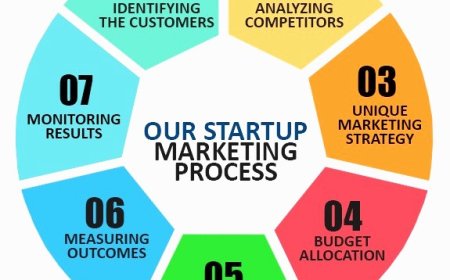How will I price my product or service competitively while ensuring profitability
Pricing your product or service competitively while ensuring profitability is a delicate balance that requires careful consideration. Here are some strategies to help you determine an appropriate pricing strategy:

Pricing your product or service competitively while ensuring profitability is a delicate balance that requires careful consideration. Here are some strategies to help you determine an appropriate pricing strategy:
-
Understand Your Costs: Start by thoroughly understanding your costs. Consider both direct costs (such as materials, production, and labor) and indirect costs (such as overhead, marketing, and administrative expenses). Calculate your total cost per unit or service to establish a baseline for pricing.
-
Research the Market: Conduct market research to understand how your competitors are pricing similar products or services. Analyze their pricing strategies, value propositions, and target customer segments. This will help you position your offering competitively.
-
Determine Your Value Proposition: Clearly define the unique value your product or service provides to customers. Identify the key benefits, features, or advantages that differentiate you from competitors. Assess how these factors impact the perceived value of your offering, which can influence your pricing strategy.
-
Consider Target Market and Customer Segments: Understand your target market's willingness to pay and their price sensitivity. Different customer segments may have different expectations and budgets. Evaluate the value your offering brings to each segment and adjust pricing accordingly.
-
Choose a Pricing Strategy: Select a pricing strategy that aligns with your business goals and market dynamics. Some common strategies include:
- Cost-Based Pricing: Add a markup to your total costs to achieve a desired profit margin.
- Value-Based Pricing: Set prices based on the perceived value your product or service delivers to customers. Consider the benefits, outcomes, or solutions your offering provides and price accordingly.
- Competitive Pricing: Set prices in line with or slightly below your competitors' prices to position yourself competitively. Be cautious not to engage in a price war that could harm profitability.
- Skimming Pricing: Set higher initial prices to capture early adopters or customers willing to pay a premium for new or unique features. Lower prices over time as competition increases.
- Penetration Pricing: Set lower initial prices to gain market share quickly and attract price-sensitive customers. Increase prices as your market position strengthens.
-
Test and Monitor Pricing: Consider conducting pricing experiments or offering limited-time promotions to gauge customer response and price elasticity. Monitor customer feedback, sales volume, and profitability to assess the effectiveness of your pricing strategy. Be willing to adjust prices if necessary.
-
Consider Pricing Models: Explore different pricing models that suit your business model and industry. Options include one-time purchases, subscription-based pricing, tiered pricing, freemium models, or value-added bundles. Choose a model that aligns with your target customers' preferences and encourages long-term profitability.
-
Provide Transparent Pricing: Clearly communicate your pricing to customers. Avoid hidden fees or complicated pricing structures that may confuse or frustrate potential buyers. Transparency builds trust and can positively impact customer perception.
-
Monitor Costs and Profitability: Regularly review your costs and profitability to ensure your pricing strategy remains viable. Assess any cost fluctuations, economies of scale, or efficiencies that can be gained to maintain or improve profitability without sacrificing competitiveness.
-
Continuously Assess and Adapt: Market dynamics and customer preferences can change over time. Regularly assess your pricing strategy, conduct competitive analyses, and monitor customer feedback to stay responsive and adjust your prices as needed.
Remember, pricing is not a one-time decision. It requires ongoing evaluation and adjustment as your business evolves and market conditions change. Balancing competitiveness and profitability requires understanding your costs, customer perceptions, and market dynamics. Strive to deliver value while maintaining a sustainable and profitable pricing strategy.
What's Your Reaction?











































